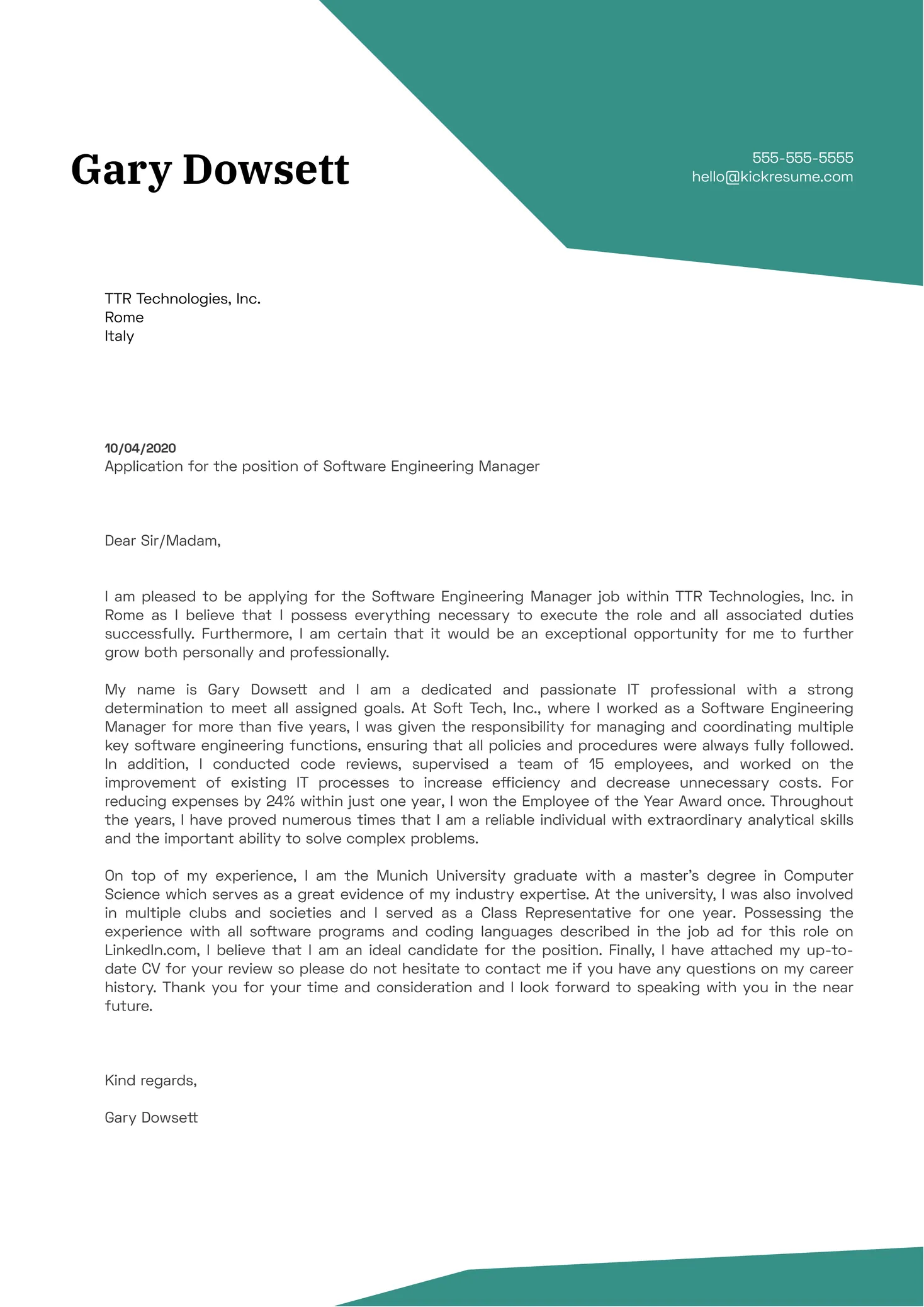Cover Letter for Software Engineers: Why It Matters
In the competitive world of software engineering, a well-crafted cover letter is your first opportunity to make a strong impression. It’s more than just a formality; it’s your chance to showcase your personality, passion, and relevant skills in a way that a resume alone cannot. A compelling cover letter can significantly increase your chances of landing an interview by providing context, demonstrating genuine interest in the company, and highlighting why you are the perfect fit for the role. A thoughtfully written cover letter allows you to tell a story about your career and aspirations, going beyond the bullet points on your resume to connect with the hiring manager on a personal level.
Highlighting Your Skills and Experience
The core of your cover letter lies in effectively highlighting your skills and experience. This section should be tailored to the specific job description, emphasizing the skills and experiences that align with the requirements. Avoid simply listing your skills; instead, provide specific examples of how you’ve used these skills to achieve results in previous roles or projects. Use action verbs to describe your accomplishments and quantify your achievements whenever possible. By demonstrating the practical application of your skills, you provide concrete evidence of your capabilities and make a strong case for why you should be considered for the position. This approach not only shows what you can do, but also how you do it.
Technical Skills to Showcase
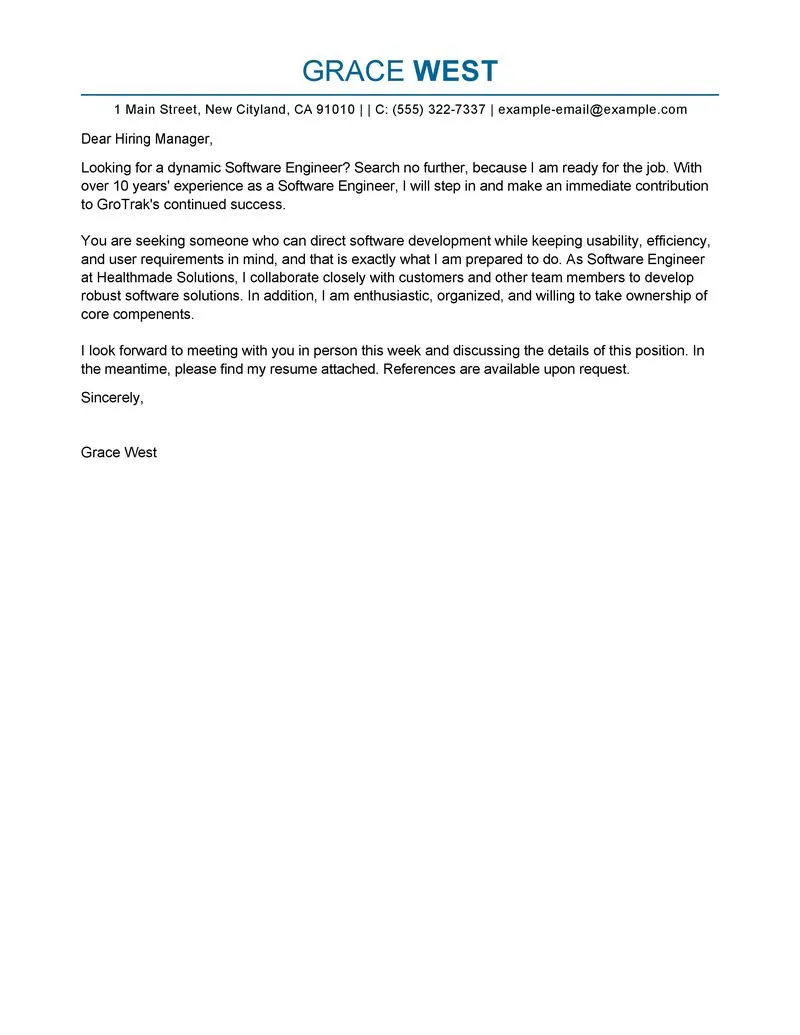
Clearly articulate your technical expertise. Mention specific programming languages (e.g., Java, Python, C++), frameworks (e.g., React, Angular, Spring), and tools (e.g., Git, Docker, AWS) relevant to the job. Instead of just listing these skills, briefly describe how you’ve used them in past projects. For example, you might say, ‘Developed a RESTful API using Python and Django, resulting in a 20% improvement in data retrieval speed.’ The more specific you are, the more credible your claims become. Be sure to align your technical skills with the keywords found in the job description to ensure your letter is easily recognized by applicant tracking systems.
Project Experience and Contributions
Detail your involvement in past projects, emphasizing your role, responsibilities, and contributions. Focus on projects that directly relate to the job you’re applying for, and use the STAR method (Situation, Task, Action, Result) to structure your descriptions. Start by briefly describing the situation or context of the project, outline your specific tasks, explain the actions you took, and then highlight the results. For instance, ‘In a team project, I was tasked with designing and implementing the user authentication module. I utilized security best practices and delivered the module a week ahead of schedule. This reduced login errors by 15% and enhanced overall user experience.’ Highlighting quantifiable results demonstrates your value to potential employers.
Quantifying Your Achievements
Use numbers, percentages, and data to quantify your accomplishments whenever possible. This adds credibility and demonstrates the impact of your work. For instance, instead of saying ‘Improved website performance,’ say ‘Optimized website loading time by 30%, resulting in a 20% increase in user engagement.’ Such statements provide concrete evidence of your abilities. Quantifiable results make your cover letter stand out. Consider metrics like code efficiency improvements, error reduction, cost savings, or the number of users impacted by your work. This approach helps hiring managers quickly understand the value you bring to a team.
Non-Technical Skills and Qualities
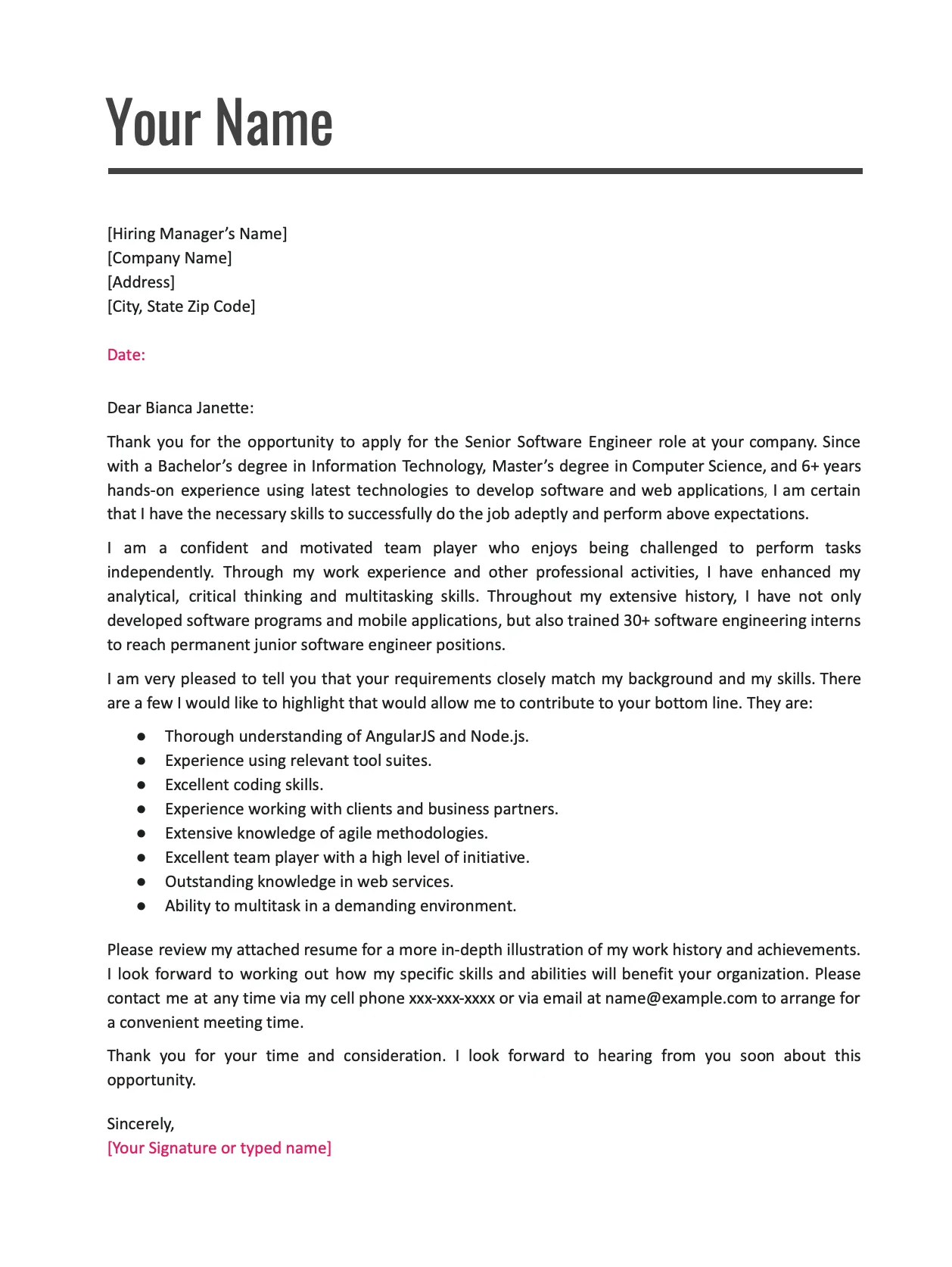
Software engineering requires more than just technical skills. Emphasize your soft skills, such as communication, problem-solving, teamwork, and adaptability. These qualities are crucial for collaboration and success in a team environment. Highlight how you’ve demonstrated these skills in your previous roles or projects. Providing examples makes your claims more convincing. For example, when describing your teamwork skills, mention specific instances where you successfully collaborated with others to achieve a common goal. This showcases your ability to work effectively in a team and contribute to a positive work environment. These skills are just as important as the technical skills themselves.
Demonstrating Problem-Solving Abilities
Software engineers are, at their core, problem solvers. Provide examples of how you’ve tackled complex challenges. Describe the problem, the steps you took to solve it, and the outcome. Mention any innovative solutions or approaches you employed. For example, you might describe how you troubleshooted a critical bug in a production environment by utilizing debugging tools to identify the root cause, and then implemented a solution that prevented future occurrences. Problem-solving skills are highly valued because they demonstrate your ability to think critically and address complex issues efficiently.
Showcasing Teamwork and Communication
Highlight your ability to work collaboratively. Mention any experience with agile methodologies, pair programming, or project management tools. Give examples of how you’ve effectively communicated technical concepts to non-technical stakeholders. For instance, you might say, ‘Successfully presented technical findings and recommendations to stakeholders during project updates, ensuring clear understanding and alignment.’ Teamwork is essential in most software engineering environments, and excellent communication skills are vital for conveying ideas, resolving conflicts, and ensuring projects run smoothly. Good communication skills often lead to more efficient teamwork.
Tailoring Your Cover Letter
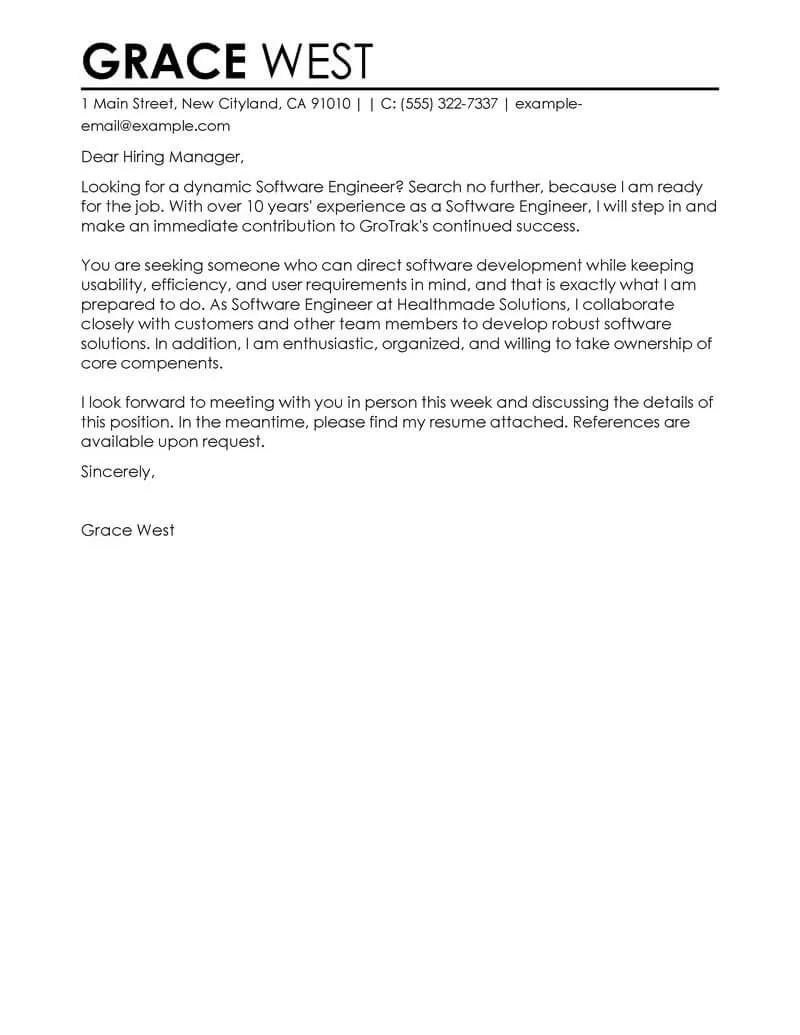
A generic cover letter is easily recognizable, and often, dismissed. Tailor your cover letter to each specific job application. Customizing your letter shows that you’ve taken the time to understand the company’s needs and the role’s requirements. This personalization significantly increases your chances of capturing the hiring manager’s attention. Research the company, understand their mission, values, and current projects. Use this information to demonstrate why you’re a good fit for their specific needs. Always mention the specific job title you are applying for, and reference the skills or experiences most relevant to the position.
Researching the Company and Role
Before you start writing, thoroughly research the company and the specific role. Visit their website, read news articles, and check their social media profiles to understand their current projects, culture, and values. This research informs your cover letter and allows you to align your skills and experience with their needs. Look closely at the job description and identify the key skills and qualifications required. This information will help you tailor your cover letter to address these specific points, demonstrating that you understand what the company is looking for and how you can contribute.
Customizing Your Letter for Each Application
Each cover letter should be unique. Customize your cover letter by mentioning the company by name and referencing specific projects or initiatives that resonate with you. Align your skills and experience with the job description, highlighting relevant keywords and demonstrating how you can add value to the company. Show that you have taken the time to understand their needs and that you genuinely want to be part of their team. Simply swapping out the company name and job title is not sufficient; you need to adjust the content to showcase your relevance to the specific role.
Formatting and Structure
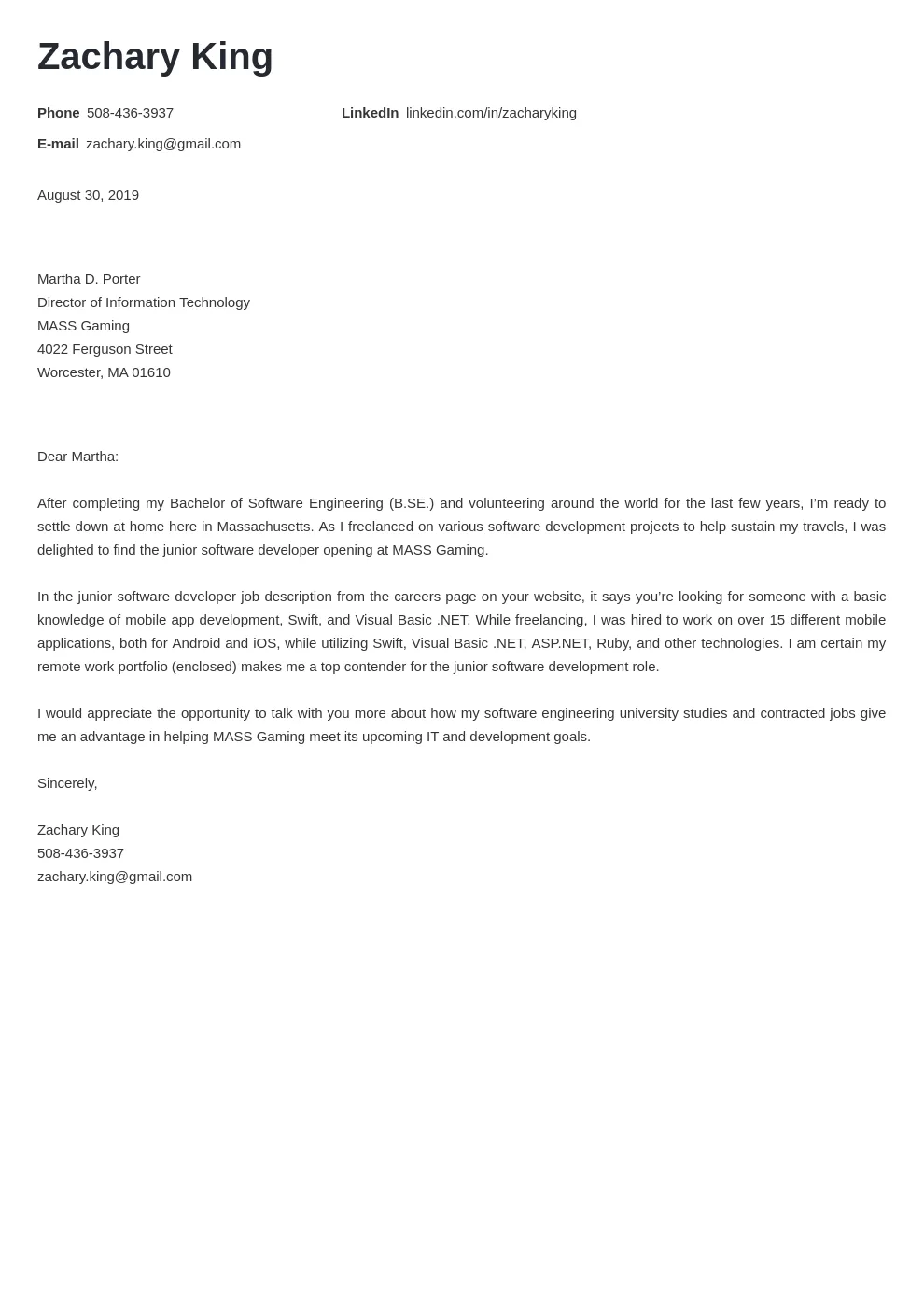
The formatting and structure of your cover letter are crucial for readability and professionalism. A well-formatted letter is easier to read and demonstrates your attention to detail. Use a clear, readable font, appropriate margins, and proper spacing between paragraphs. Avoid overwhelming the reader with large blocks of text; keep your paragraphs concise and to the point. Formatting and structure influence the first impression and make your cover letter more appealing and easier to engage with. Consistent and professional formatting reflects your organizational skills and commitment to detail.
Proper Formatting for Readability
Choose a professional and easy-to-read font such as Arial, Times New Roman, or Calibri, and use a font size between 10 and 12 points. Set consistent margins (usually 1 inch on all sides) and use single spacing within paragraphs with a blank line between paragraphs. This enhances readability and prevents the letter from appearing cluttered. Proper formatting shows respect for the hiring manager’s time and ensures they can easily absorb the information you are presenting. It helps your letter stand out and be perceived as professional and well-organized.
Structuring Your Cover Letter Effectively
A standard cover letter structure includes the following sections contact information, salutation, a compelling opening paragraph, body paragraphs highlighting your skills and experience, a closing paragraph, and a professional sign-off. The opening paragraph should capture the reader’s attention, and the body paragraphs should provide specific examples to support your claims. The closing paragraph should reiterate your interest in the role and company, and include a call to action, such as requesting an interview. Organizing your cover letter in a logical and clear manner enhances its effectiveness, guiding the reader through your qualifications.
Essential Cover Letter Elements
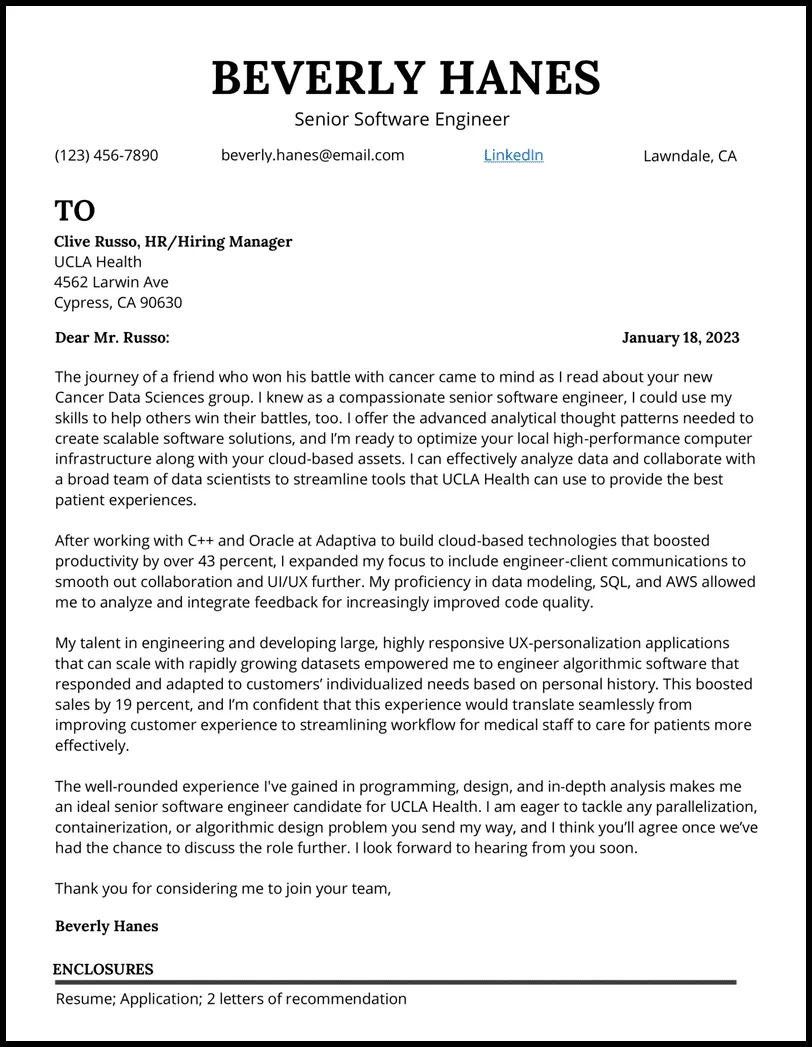
Certain elements are crucial for a successful cover letter. These elements establish your professionalism, capture the reader’s attention, and present your qualifications effectively. Including these key components helps ensure that your cover letter is comprehensive and makes a strong impression. Omitting essential elements can undermine your application. Make sure that all the crucial components are present and clearly articulated.
Contact Information and Salutation
At the top of your cover letter, include your contact information (name, phone number, email address, and optionally your LinkedIn profile URL). Address the letter to the hiring manager, if possible. If you can’t find a name, use a professional salutation such as ‘Dear Hiring Manager.’ Always double-check the spelling of the hiring manager’s name and company name. Addressing the hiring manager by name, shows that you have taken the effort to make a direct connection. This personal touch makes your cover letter more appealing. Ensure your contact information is current and easy to find, so the recruiter can easily reach out.
Crafting a Compelling Opening
Your opening paragraph should immediately grab the reader’s attention. State the position you’re applying for and where you found the listing. Briefly mention what excites you about the role or the company. Consider using a hook like a brief accomplishment or a relevant skill that aligns with the job requirements. For instance, ‘I am excited to apply for the Software Engineer position at [Company Name], as I have been consistently impressed by [Company’s Project or Innovation].’ A strong opening paragraph sets the tone for the entire letter and encourages the hiring manager to continue reading. This first paragraph is critical as it establishes your interest and relevance to the role.
The Body Paragraphs: Show, Don’t Tell
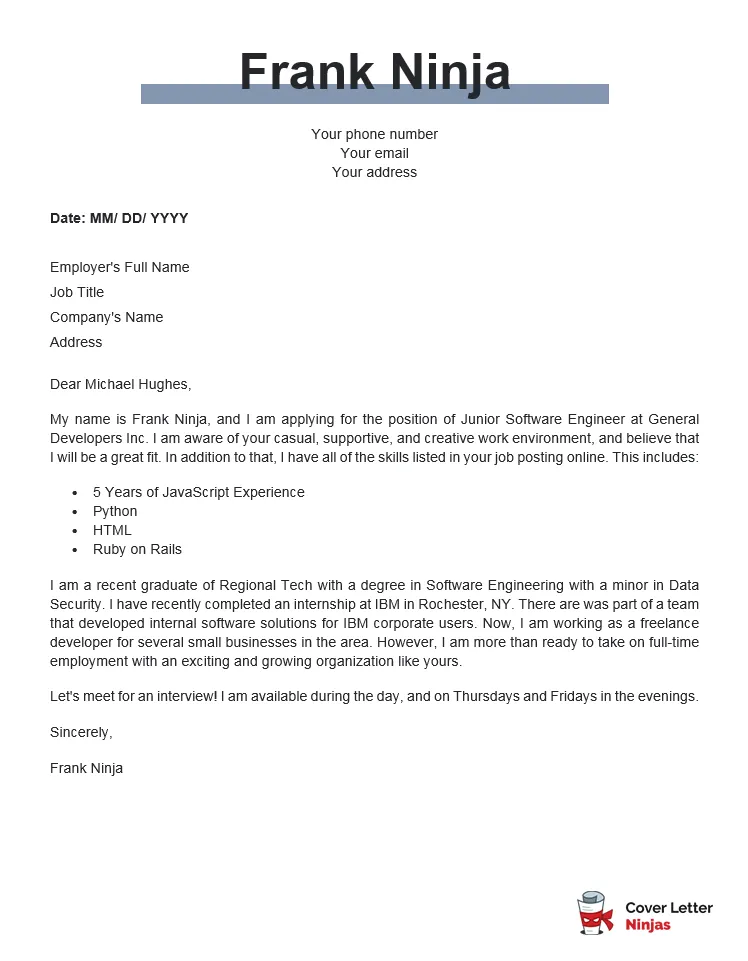
Use the body paragraphs to showcase your skills, experience, and accomplishments. Instead of simply stating your abilities, provide specific examples of how you’ve used those skills to achieve results. Support your claims with concrete evidence and quantify your achievements whenever possible. Use the STAR method to structure your examples: Situation, Task, Action, Result. This approach provides clear, concise evidence of your capabilities. For example, ‘In my previous role, I identified a critical bug in the user authentication process. I developed and implemented a fix within 24 hours, which eliminated user login errors and restored full functionality.’ The body paragraphs are the core of your cover letter, providing the detailed evidence that validates your qualifications.
Writing a Strong Closing
Your closing paragraph should reiterate your interest in the role and the company. Express your enthusiasm and summarize why you are a good fit. Include a call to action, such as requesting an interview or expressing your eagerness to discuss your qualifications further. Keep the tone professional and enthusiastic. For example, ‘I am eager to contribute my skills and passion for software engineering to [Company Name] and would welcome the opportunity to discuss my qualifications in an interview.’ A strong closing leaves a positive impression and encourages the hiring manager to move forward with your application. Thank the hiring manager for their time and consideration.
Common Mistakes to Avoid
Several common mistakes can undermine your cover letter. Recognizing these pitfalls is crucial for creating a compelling document. Avoiding these mistakes helps you present your qualifications effectively and increases your chances of landing an interview. Paying close attention to the details and ensuring your cover letter is free from these errors shows that you are detail-oriented and professional, which are highly sought-after traits in software engineers. A flawless cover letter reflects well on your abilities and commitment to a high standard of quality.
Generic Cover Letters
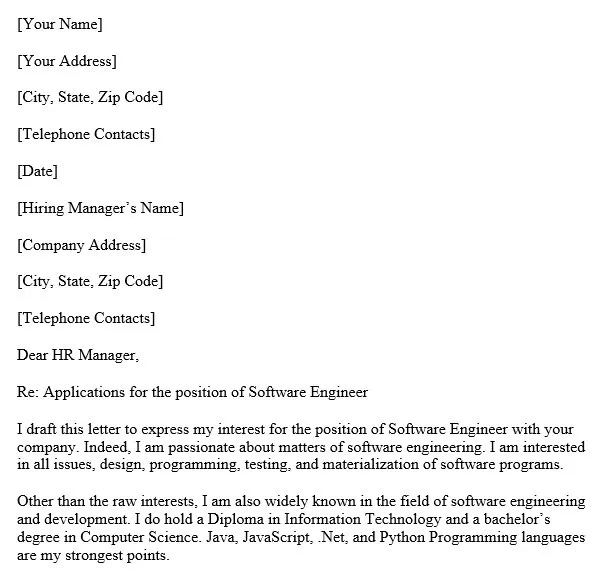
Avoid using generic cover letters that are not tailored to the specific job or company. Generic letters do not demonstrate any specific interest or understanding of the role and are likely to be discarded. Every cover letter should reflect your understanding of the company, the role, and your unique ability to fill that role. Research the company and customize the letter to demonstrate your genuine interest and the value you can bring to the team. Your cover letter must show that you’ve taken the time to understand the company and its needs.
Typos and Grammatical Errors
Typos and grammatical errors can damage your credibility and create a negative impression. Always proofread your cover letter carefully before submitting it. Use a spell checker and grammar checker, and ideally, have someone else review your letter for errors. Correct any errors in grammar, punctuation, and spelling. A cover letter with errors suggests a lack of attention to detail and professionalism, which are crucial traits for a software engineer. Proofreading is essential to guarantee the message is clear and professional.
Lack of Specificity
Avoid general statements that do not provide any specific evidence of your skills or accomplishments. Instead of saying, ‘I am a good problem-solver,’ provide a specific example of a problem you solved and the positive outcome. Focus on concrete achievements, quantifiable results, and the specific skills you used. Your cover letter must show, not just tell, your qualifications. Specific examples provide clear evidence of your capabilities and help the hiring manager understand the value you can provide to the team. This approach will make your cover letter more persuasive and memorable.
Cover Letter Examples and Templates
Utilizing cover letter examples and templates can be a helpful starting point for your application. However, it is essential to customize them to match your specific skills, experience, and the requirements of the job. A well-customized template can give you a solid foundation while still maintaining the necessary personal touch. The structure and wording of a template must always be adapted to reflect your unique experiences and the specific role you are applying for. Customizing your cover letter makes it unique and increases its effectiveness.
Example Cover Letter Structure
A standard cover letter structure typically includes these sections contact information, salutation, opening paragraph, body paragraphs highlighting skills and experience, a closing paragraph, and a professional sign-off. Examples can vary, but these core elements remain constant. Use this structure as a guide, but be sure to customize each section. Ensure your letter has a clear flow, with each section building upon the previous one. The goal is to communicate effectively and present a concise overview of your qualifications and how you meet the job’s requirements.
Template Resources and Customization
Many online resources offer cover letter templates. While these can provide a starting point, remember to customize them with your information and relevant details. Customize the template by including your relevant skills, projects, and accomplishments. Tailor the content to the specific job description and company. Review the job requirements and ensure you highlight the most relevant skills. Templates serve as a framework, but customization is key to showcasing your individual skills and experiences. Tailoring the template will make it original.
Final Review and Submission
Before submitting your cover letter, perform a thorough review. Ensure your document is free of errors, tailored to the job, and presents you in the best possible light. A careful review is crucial for ensuring your cover letter makes a positive impression. Proofreading and editing are necessary steps that demonstrate your attention to detail and professionalism. A well-reviewed cover letter signals that you care about the opportunity.
Proofreading and Editing
Carefully proofread your cover letter for any typos, grammatical errors, or formatting inconsistencies. Use spell-check and grammar-check tools, but also manually review the document. Ensure the tone is professional and the content is clear and concise. It’s helpful to have someone else review your cover letter to catch any errors you might have missed. Proofreading verifies that your message is clear and that there are no distracting errors. This ensures your cover letter is presented professionally.
Submitting Your Cover Letter
When submitting your cover letter, follow the instructions provided in the job posting. Save your cover letter in the format requested (usually PDF). Ensure the file name includes your name and the job title. Send your cover letter along with your resume, ensuring both are in the correct format. Following instructions and paying attention to details are very important. Confirm that your cover letter and resume have been successfully uploaded. Make sure the application is complete and the recruiter can see your cover letter.
Additional Tips for Success
Beyond the basics, there are additional steps you can take to increase the impact of your cover letter. These extra tips help you stand out and showcase your potential. Incorporating these tips will make your application stronger. These strategies distinguish your application from the competition and increase your likelihood of an interview.
Using Keywords Effectively
Carefully review the job description and identify relevant keywords. Incorporate these keywords naturally throughout your cover letter. This helps your application pass through applicant tracking systems (ATS) and ensures that hiring managers can quickly see that you match the job requirements. Use the keywords strategically, without sounding forced or unnatural. Using the keywords in your cover letter makes it more likely to get noticed. Keywords help your cover letter be recognized and viewed by the hiring team.
Highlighting Your Passion
Show your enthusiasm for software engineering and the specific role. Mention what interests you about the company and why you are excited about the opportunity. Personalize your letter by connecting your passion with the company’s mission, values, or products. Demonstrating your genuine interest can leave a memorable impression. Passion can distinguish you from other candidates. Your passion shows that you are motivated and will be successful at the company.
Following Up After Submission
After submitting your cover letter and resume, consider following up with the hiring manager or recruiter. Send a polite email a week or two after the deadline, expressing your continued interest and inquiring about the status of your application. This shows your initiative and commitment. However, be mindful not to be too persistent. Following up is a good idea, but it is important not to be annoying. It’s the perfect way to demonstrate your level of interest.
